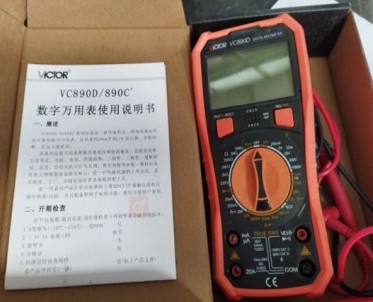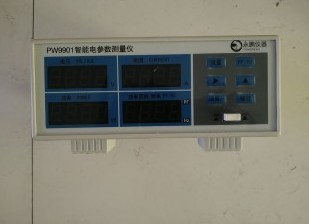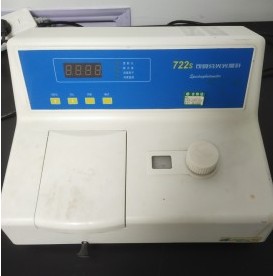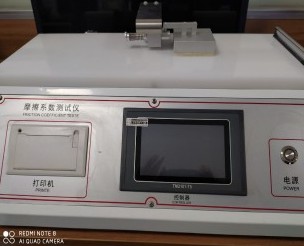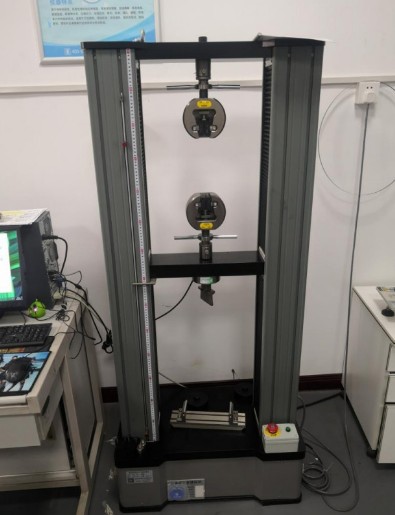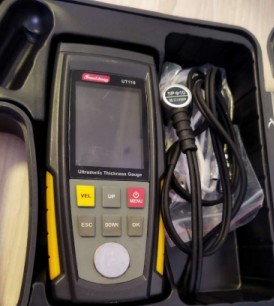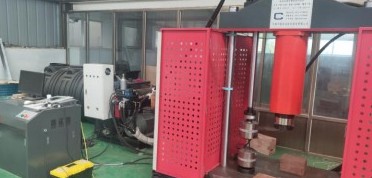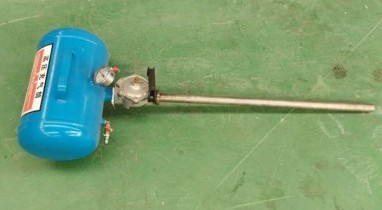冰点检测标准相关信息
GB 5413.38-2016 食品安全国家标准生乳冰点的测定
简介:
信息:ICS: CCS: 发布:2016-08-31 实施:2017-03-01
GOST 33592-2015 冷却液. 采用手持式折射计测定冰点
简介:
信息:ICS:75.100 CCS: 发布:2015 实施:2017-07-01
ISO 5764:2009 牛奶和牛奶;冰点的测定——热敏电阻温度计法(参考法)
简介:
信息:ICS:67.100.10 CCS: 发布:2009-04-30 实施:
GB 5413.38-2016 食品安全国家标准生乳冰点的测定
简介:
信息:ICS: CCS: 发布:2016-08-31 实施:2017-03-01
GOST ISO 1041-2015 精油. 冰点的测定
简介:
信息:ICS:71.100.60 CCS: 发布:2015 实施:2016-07-01
GOST R 53706-2009 航空燃料.冰点的测定方法
简介:
信息:ICS:75.160.20 CCS: 发布:2009 实施:2011-01-01
GB 5413.38-2010 食品安全国家标准 生乳冰点的测定
简介:本标准规定了热敏电阻冰点仪测定生乳冰点的基准方法。本标准适用于生乳冰点的测定。
信息:ICS: CCS:X16 发布:2010-03-26 实施:2010-06-01
GOST ISO 1041-2015 精油. 冰点的测定
简介:
信息:ICS:71.100.60 CCS:Y41 发布:2015 实施:2016-07-01
ASTM E563-08 作为参考温度的冰点浴的制备和使用的标准实践
简介:
信息:ICS:71.040.20 CCS: 发布:2008-11-01 实施:
GB/T 2430-2008 航空燃料冰点测定法
简介:1.1 本标准规定了喷气燃料和航空活塞式发动机燃料冰点的测定方法,低于冰点时航空燃料中会有固态烃类结晶形成。1.2 本标准采用国际单位制[SI]单位。1.3 本标准使用中可能涉及到有危险的材料、操作和设备。本标准并未对与此有关的所有安全问题都提出建议,用户在使用本标准前有责任制定相应的安全和保护措施,并明确其受限制的适用范围。
信息:ICS:75.160.20 CCS:E31 发布:2008-08-25 实施:2009-02-01
GOST 33592-2015 冷却液. 采用手持式折射计测定冰点
简介:
信息:ICS:75.100 CCS:J76 发布:2015 实施:2017-07-01
INTA 15 02 05 燃料和润滑油的冰点和浑浊温度
简介:
信息:ICS: CCS: 发布:2008-1-1 实施:
GB/T 2430-1981 喷气燃料冰点测定法
简介: 本方法适用于测定喷气燃料的冰点。在测定条件下,试样出现结晶后,再使其升温,原来形成的烃类结晶消失的最低温度即为冰点。
信息:ICS:75.160.20 CCS:E31 发布:1981-02-13 实施:1981-07-01
ASTM D6660-01(2014)e1 用自动相变法测定含水乙二醇基发动机冷却剂冰点的标准试验方法
简介:
信息:ICS:19.040 CCS: 发布:2014-07-01 实施:
ASTM E563-2008 作为参考温度制备和使用的冰点浴的标准实施规程
简介:This practice is adequate for use with other ASTM standards that specify the ice point as a reference. It is also intended to be adequate for most other ice-point reference purposes. The ice point is a common practical industrial reference point of thermometry. The ice point is relatively simple to realize and provides a readily available natural fixed-point reference temperature. Use in Resistance Thermometry: The ice point was a defining fixed point on practical temperature scales prior to 1960. The ITS-90 defines W(T90) = R(T90)/R(273.16 K), the measured resistance ratio of a Standard Platinum Resistance Thermometer (SPRT), in reference to the water triple point, not the ice point (1). In many instances, where the water triple point is not available, or when the accuracy obtainable with the water triple point is not required, reference to a properly established and maintained ice-point reference is used. For industrial-quality resistance thermometers, the resistance value is determined for 0 x00B0;C, and an uncertainty that is appropriate for the quality of the ice-point realization is assigned. Use in Thermoelectric Thermometry: In thermoelectric thermometry, the ice point is ordinarily used as the reference temperature (2). Adequate thermoelectric reference requires that thermocouple junctions be well-coupled thermally to the bath, electrically isolated from each other and from the bath, and adequately immersed to avoid perturbing the reference-junction temperatures by radiation and longitudinal conduction of heat along the thermoelements (3 and 4). Use in Liquid-in-Glass Thermometry: In liquid-in-glass thermometry, the ice point is ordinarily used as the reference temperature (6). The periodic recalibration of a liquid-in-glass thermometer at the ice point provides a reliable indication of the effect of gradual relaxation of residual mechanical strains in the glass that have a significant effect on the volume of the bulb (6).1.1 This practice covers a method of preparing, maintaining, and using a temperature reference bath of a mixture of shaved ice and water, saturated with air at a pressure of 101 325 Pa (1 atm). 1.2 An industrial practice for relating values referenced to the ice point and to the water triple point on the ITS-90 is included. 1.3 Methods to promote uniformity of bath temperature by mechanical stirring or agitation are not described in detail. 1.4 Methods of approximating the ice point, as by thermostatically-controlled refrigeration, are not covered by this practice. 1.5 This standard does not purport to address all of the safety concerns, if any, associated with its use. It is the responsibility of the user of this standard to establish appropriate safety and health practices and determine the applicability of regulatory limitations prior to use.
信息:ICS:71.040.20 (Laboratory ware and related apparatus) CCS:N61 发布:2008 实施:
ASTM D7153-22a 航空燃料冰点的标准试验方法(自动激光法)
简介:
信息:ICS:75.160.20 CCS: 发布:2022-10-01 实施:
ASTM D3321-13 现场试验用折射计使用的标准试验方法测定含水发动机冷却剂的冰点
简介:
信息:ICS:17.180.30 CCS: 发布:2013-05-01 实施:
ASTM D3321-94(2007) 现场试验用折射计使用的标准试验方法测定含水发动机冷却剂的冰点
简介:
信息:ICS:17.180.30 CCS: 发布:2007-11-15 实施:
ASTM D7153-22ae1 航空燃料冰点的标准试验方法(自动激光法)
简介:
信息:ICS:75.160.20 CCS: 发布:2022-10-01 实施:
ASTM F2432-12 制冰机 制冰机分配器和冰点分配设备的标准规范
简介:
信息:ICS:67.260 CCS: 发布:2012-08-01 实施:
ASTM D6660-01(2007) 用自动相变法测定含水乙二醇基发动机冷却剂冰点的标准试验方法
简介:
信息:ICS:19.040 CCS: 发布:2007-04-01 实施:
DB21/T 3614-2022 低冰点沥青路面设计与施工技术规程
简介:
信息:ICS:91.120.10 CCS:P 32 发布:2022-08-30 实施:2022-09-30
ASTM D3321-12 现场试验用折射计使用的标准试验方法测定含水发动机冷却剂的冰点
简介:
信息:ICS:17.180.30 CCS: 发布:2012-04-01 实施:
KS H ISO 5764-2006(2016) 牛奶冰点的测定热敏电阻冰点仪法
简介:
信息:ICS:67.100.10 CCS: 发布:2006-11-29 实施:
ASTM E563-22 冰点浴作为参考温度的制备和使用的标准实施规程
简介:
信息:ICS:71.040.20 CCS: 发布:2022-05-01 实施:
ASTM E563-11 作为参考温度的冰点浴的制备和使用的标准实践
简介:
信息:ICS:71.040.20 CCS: 发布:2011-05-01 实施:
KS H ISO 5764-2006 牛奶.冰点的测定.(热敏电阻冰点测定法)
简介:이 규격은 원유, 저온 살균유, 초고온 살균유 또는 고온 살균유, 부분 탈지유 및 탈지유의
信息:ICS:67.100.10 CCS:X16 发布:2006-11-29 实施:2006-11-29
KS H ISO 5764-2021 牛奶.冰点的测定.热敏电阻冷冻镜法
简介:
信息:ICS:67.100.10 CCS: 发布:2021-12-31 实施:
ASTM E563-2011(2016) 制备和使用作为参考温度的冰点浴的标准实施规程
简介: 5.1x00a0;This practice is adequate for use with other ASTM standards that specify the ice point as a reference. It is also intended to be adequate for most other ice-point reference purposes. 5.2x00a0;The ice point is a common practical industrial reference point of thermometry. The ice point is relatively simple to realize and provides a readily available natural fixed-point reference temperature. 5.3x00a0;Use in Resistance Thermometry:x00a0; 5.3.1x00a0;The ice point was a defining fixed point on practical temperature scales prior to 1960. 5.3.2x00a0;The ITS-90 defines W(T90)8201;=8201;R(T90)/R(273.16 K), the measured resistance ratio of a Standard Platinum Resistance Thermometer (SPRT), in reference to the water triple point, not the ice point (1).3 In many instances, where the water triple point is not available, or when the accuracy obtainable with the water triple point is not required, reference to a properly established and maintained ice-point reference is used. For industrial-quality resistance thermometers, the resistance value is determined for 0 x00b0;C, and an uncertainty that is appropriate for the quality of the ice-point realization is assigned. 5.4x00a0;Use in Thermoelectric Thermometry:x00a0; 5.4.1x00a0;In thermoelectric thermometry, the ice point is ordinarily used as the reference temperature (2). 5.4.2x00a0;Adequate thermoelectric reference requires that thermocouple junctions be well-coupled thermally to the bath, electrically isolated from each other and from the bath, and adequately immersed to avoid perturbing the reference-junction temperatures by radiation and longitudinal conduction of heat along the thermoelements (3 and 4). 5.5x00a0;Use in Liquid-in-Glass Thermometry:x00a0; 5.5.1x00a0;In liquid-in-glass thermometry, the ice point is ordinarily used as the reference temperature (5). 5.5.2x00a0;The periodic recalibration of a liquid-in-...... ......
信息:ICS:71.040.20 CCS: 发布:2011 实施:
KS H ISO 5764-2006 牛奶.冰点的测定.(热敏电阻冰点测定法)
简介:이 규격은 원유, 저온 살균유, 초고온 살균유 또는 고온 살균유, 부분 탈지유 및 탈지유의
信息:ICS:67.100.10 CCS:X16 发布:2006-11-29 实施:2006-11-29
JJF 1816-2020 生乳冰点仪校准规范
简介:
信息:ICS: CCS: 发布:2020-01-17 实施:2020-04-17
GOST R ISO 5764-2011 牛奶.凝固点测定.热敏电阻冰点测定仪法(基准法)
简介:
信息:ICS:67.100.10 CCS: 发布:2011 实施:2013-01-01
TCVN 7170-2006 航空燃料.冰点测定试验方法
简介:
信息:ICS: CCS: 发布:2006 实施:
ASTM D6660-01(2019) 用自动相变法测定含水乙二醇基发动机冷却剂冰点的标准试验方法
简介:
信息:ICS:19.040 CCS: 发布:2019-04-01 实施:
TCVN 7085-2011 牛奶.冰点的测定.热敏电阻冰点测定器法(参照法)
简介:
信息:ICS: CCS: 发布:2011 实施:
ASTM D1016-05e2 冰点碳氢化合物纯度的标准试验方法
简介:
信息:ICS:71.080.01 CCS: 发布:2005-11-01 实施:
ASTM D3321-19 现场试验用折射计使用的标准试验方法测定含水发动机冷却剂的冰点
简介:
信息:ICS:17.180.30 CCS: 发布:2019-04-01 实施:
ASTM E563-2011 以冰点浴作为参考温度的准备和使用标准操作规程
简介:This practice is adequate for use with other ASTM standards that specify the ice point as a reference. It is also intended to be adequate for most other ice-point reference purposes. The ice point is a common practical industrial reference point of thermometry. The ice point is relatively simple to realize and provides a readily available natural fixed-point reference temperature. Use in Resistance Thermometry: The ice point was a defining fixed point on practical temperature scales prior to 1960. The ITS-90 defines W(T90) = R(T90)/R(273.16 K), the measured resistance ratio of a Standard Platinum Resistance Thermometer (SPRT), in reference to the water triple point, not the ice point (1). In many instances, where the water triple point is not available, or when the accuracy obtainable with the water triple point is not required, reference to a properly established and maintained ice-point reference is used. For industrial-quality resistance thermometers, the resistance value is determined for 0 x00B0;C, and an uncertainty that is appropriate for the quality of the ice-point realization is assigned. Use in Thermoelectric Thermometry: In thermoelectric thermometry, the ice point is ordinarily used as the reference temperature (2). Adequate thermoelectric reference requires that thermocouple junctions be well-coupled thermally to the bath, electrically isolated from each other and from the bath, and adequately immersed to avoid perturbing the reference-junction temperatures by radiation and longitudinal conduction of heat along the thermoelements (3 and 4). Use in Liquid-in-Glass Thermometry: In liquid-in-glass thermometry, the ice point is ordinarily used as the reference temperature (6). The periodic recalibration of a liquid-in-glass thermometer at the ice point provides a reliable indication of the effect of gradual relaxation of residual mechanical strains in the glass that have a significant effect on the volume of the bulb (6).1.1 This practice covers a method of preparing, maintaining, and using a temperature reference bath of a mixture of shaved ice and water, saturated with air at a pressure of 101 325 Pa (1 atm). 1.2 An industrial practice for relating values referenced to the ice point and to the water triple point on the ITS-90 is included. 1.3 Methods to promote uniformity of bath temperature by mechanical stirring or agitation are not described in detail. 1.4 Methods of approximating the ice point, as by thermostatically-controlled refrigeration, are not covered by this practice. 1.5 This standard does not purport to address all of the safety concerns, if any, associated with its use. It is the responsibility of the user of this standard to establish appropriate safety and health practices and determine the applicability of regulatory limitations prior to use.
信息:ICS:71.040.20 (Laboratory ware and related apparatus) CCS:N61 发布:2011 实施:
ASTM D1016-05e1 冰点碳氢化合物纯度的标准试验方法
简介:
信息:ICS:71.080.01 CCS: 发布:2005-11-01 实施:
ASTM F2432-12(2018) 制冰机 制冰机分配器和冰点分配设备的标准规范
简介:
信息:ICS:67.260 CCS: 发布:2018-10-01 实施:
ARMY A-A-51461 C VALID NOTICE 2-2010 防冻剂冰点和亚硝酸盐浓度测试工具,测试条和比色图表
简介:
信息:ICS: CCS: 发布:2010-05-21 实施:
ASTM D1016-05 冰点碳氢化合物纯度的标准试验方法
简介:
信息:ICS:71.080.01 CCS: 发布:2005-11-01 实施:
KS M 1071-1-2017 化学物质熔点/冰点测定指南
简介:
信息:ICS:71.040.40 CCS: 发布:2017-12-27 实施:
ASTM D1016-05(2010) 冰点碳氢化合物纯度的标准试验方法
简介:
信息:ICS:71.080.01 CCS: 发布:2010-05-01 实施:
SH/T 0770-2005 航空燃料冰点测定法(自动相转换法)
简介: 本标准规定了喷气燃料冰点的测定方法,低于此温度喷气燃料中会形成固态烃类结晶。 本标准适用于测定冰点的范围为-80℃~+20℃,然而在12.4条中提到的实验室间研究只对喷气燃料冰点在-45℃~-65℃范国内进行了验证。 当用本标准测定JetB和JP4试样时,用户应引起注意(见12.3条)。 本标准使用SI(国际单位制)作为标准计量单位。 本标准使用中可能涉及到有危险的材料、操作和设备。本标准并未对与此有关的所有安全问题都提出建议,用户在使用本标准前有责任制定相应的安全和保护措施,并明确其受限制的适用范围。
信息:ICS:75.160.20 CCS:E31 发布:2005-10-10 实施:2006-02-01
KS M 1071-1-2017(2022) 化学物质熔点/冰点测定指南
简介:
信息:ICS:71.040.40 CCS: 发布:2017-12-27 实施:
ASTM E1502-2010 供基准温度冰点室使用的标准指南
简介:A pure material has a well-defined phase transition behavior, and the phase transition plateau, a characteristic of the material, can serve as a reproducible reference temperature for the calibration of thermometers. The melting or freezing points of some highly purified metals have been designated as defining fixed points on ITS-90. The fixed points of other materials have been determined carefully enough that they can serve as secondary reference points (see Table 1 and Table 2). This guide presents information on the phase transition process as it relates to establishing a reference temperature. Fixed-point cells provide users with a means of realizing melting and freezing points. If the cells are appropriately designed and constructed, if they contain material of adequate purity, and if they are properly used, they can establish reference temperatures with uncertainties of a few millikelvins or less. This guide describes some of the design and use considerations. Fixed-point cells can be constructed and operated less stringently than required for millikelvin uncertainty, yet still provide reliable, durable, easy-to-use fixed points for a variety of industrial calibration and heat treatment purposes. For example, any freezing-point cell can be operated, often advantageously, as a melting-point cell. Such use may result in reduced accuracy, but under special conditions, the accuracy may be commensurate with that of freezing points (see 6.3.10). The test procedure described in this guide produces qualification test data as an essential part of the procedure. These data furnish the basis for quality control of the fixed-point procedure. They provide for evaluation of results, assure continuing reliability of the method, and yield insight into the cause of test result discrepancies. The test procedure is applicable to the most demanding uses of fixed-point cells for precise thermometer calibration; it may not be appropriate or cost-effective for all applications. It is expected that the user of this guide will adapt the procedure to specific needs.1.1 This guide describes the essential features of fixed-point cells and auxiliary apparatus, and the techniques required to realize fixed points in the temperature range from 29 to 1085x00B0;C. 1.2 Design and construction requirements of fixed-point cells are not addressed in this guide. Typical examples are given in Fig. 1 and Fig. 2. 1.3 This guide is intended to describe good practice and establish uniform procedures for the realization of fixed points. 1.4 This guide emphasizes principles. The emphasis on principles is intended to aid the user in evaluating cells, in improving technique for using cells, and in establishing procedures for specific applications. 1.5 For the purposes of this guide, the use of fixed-point cells for the accurate calibration of thermometers is restricted to immersion-type thermometers that, when inserted into the reentrant well of the cell, (1) indicate the temperature only of the isothermal region of the well, and (2) do not significantly alter the temperature of the isothermal region of the well by heat transfer. 1.6 This guide does not address all of the details of thermometer calibration. 1.7 This guide is intended to complement special operating instructions supplied by manufacturers of fixed-point apparatus. 1.8 The values stated in SI units are to be regarded as standard. No other units of measurement are included in this standard. 1.9 The following hazard caveat pertains only to the test method portion, Section 7, of this guide. This standard does not purport to address all of the safet......
信息:ICS: CCS:N60 发布:2010 实施:
ASHRAE OR-05-1-2-2005 百叶窗翅式,扁管式换热器与顺序冰点增长周期的空气,侧热,水力学的表现
简介:Air-Side Thermal-Hlydraulic Performance of Louvered-Fin, Flat-Tube Heat Exchangers with Sequential Frost-Growth Cycles
信息:ICS:91.060.50 CCS:Q70 发布:2005-01-01 实施:
SN/T 4936-2017 航空涡轮燃料冰点的测定 自动激光法
简介:
信息:ICS:75.160.01 CCS:E30 发布:2017-11-07 实施:2018-06-01
NF V04-205-2009 牛奶.冰点的测定.热敏电阻冰点测定器(参照法)
简介:
信息:ICS:67.100.10 CCS:X16 发布:2009-08-01 实施:2009-08-01
GOST R 52332-2005 航空燃料.利用自动相转化法测定冰点
简介:
信息:ICS:75.160.20 CCS: 发布:2005 实施:2006-01-01
ASTM D1177-2017 发动机冷却液冰点的标准试验方法
简介: 5.1x00a0;The freezing point of an engine coolant indicates the coolant freeze protection. 5.2x00a0;The freezing point of an engine coolant may be used to determine the approximate glycol content, provided the glycol type is known. 1.1x00a0;This test method covers the determination of the freezing point of an aqueous engine coolant solution in the laboratory. Note 1:x00a0;Where solutions of specific concentrations are to be tested, they shall be prepared from representative samples as directed in Practice D1176. Secondary phases separating on dilution need not be separated. Note 2:x00a0;These products may also be marketed in a ready-to-use form (prediluted). 1.2x00a0;The values stated in SI units are to be regarded as the standard. The values given in parentheses are for information only. 1.3x00a0;This standard does not purport to address all of the safety concerns, if any, associated with its use. It is the responsibility of the user of this standard to establish appropriate safety and health practices and determine the applicability of regulatory limitations prior to use. 1.4x00a0;This international standard was developed in accordance with internationally recognized principles on standardization established in the Decision on Principles for the Development of International Standards, Guides and Recommendations issued by the World Trade Organization Technical Barriers to Trade (TBT) Committee.
信息:ICS:71.100.45 CCS:G17;T21 发布:2017 实施:
BS EN ISO 5764-2009 牛奶.凝固点的测定.热敏电阻冰点测定器法(基准方法)(ISO 5764-2009)
简介:This International Standard specifies a reference method for the determination of the freezing point of raw bovine milk, heat-treated whole, reduced fat and skimmed bovine milk, as well as raw ovine and caprine milk, by using a thermistor cryoscope.The freezing point can be used to estimate the proportion of extraneous water in milk. Calculation of the amount of extraneous water is subject to daily and seasonal variations, and is not within the scope of this International Standard.Results obtained from samples with a titratable acidity exceeding 20 ml of 0,1 mol/l sodium hydroxide solution per 10 g of non-fat solids are not representative of the original milk.
信息:ICS:67.100.10 CCS:X16 发布:2009-07-31 实施:2009-07-31
ASTM F2432-04 制冰机 制冰机分配器和冰点分配设备的标准规范
简介:
信息:ICS:67.100.40 CCS: 发布:2004-10-01 实施:
ASTM E563-11(2016) 作为参考温度的冰点浴的制备和使用的标准实践
简介:
信息:ICS:71.040.20 CCS: 发布:2016-05-01 实施:
GJB 6748.7-2009 车用油料质量快速测定.第7部分:冷却液冰点测定法
简介:本部分规定了冷却液的冰点测定方法。 本部分适用于快速测定冷却液的冰点。
信息:ICS: CCS:E31 发布:2009-05-25 实施:2009-08-01
ASTM D1016-99(2004)e1 冰点碳氢化合物纯度的标准试验方法
简介:
信息:ICS:71.080.01 CCS: 发布:2004-05-01 实施:
ASTM D1177-2016 发动机冷却液冰点的标准试验方法
简介: 5.1x00a0;The freezing point of an engine coolant indicates the coolant freeze protection. 5.2x00a0;The freezing point of an engine coolant may be used to determine the approximate glycol content, provided the glycol type is known. 1.1x00a0;This test method covers the determination of the freezing point of an aqueous engine coolant solution in the laboratory. Note 1:x00a0;Where solutions of specific concentrations are to be tested, they shall be prepared from representative samples as directed in Practice D1176. Secondary phases separating on dilution need not be separated. Note 2:x00a0;These products may also be marketed in a ready-to-use form (prediluted). 1.2x00a0;The values stated in SI units are to be regarded as the standard. The values given in parentheses are for information only. 1.3x00a0;This standard does not purport to address all of the safety concerns, if any, associated with its use. It is the responsibility of the user of this standard to establish appropriate safety and health practices and determine the applicability of regulatory limitations prior to use.
信息:ICS:71.100.45 CCS: 发布:2016 实施:
ISO 5764-2009 牛奶.冰点的测定.热敏电阻冰点测定法(基准法)
简介:
信息:ICS:67.100.10 CCS:X16 发布:2009-05 实施:
ASTM E1502-98(2003)e1 参考温度用冰点电池的使用标准指南
简介:
信息:ICS:17.200.20 CCS: 发布:2003-11-01 实施:
北检院部分仪器展示




 北检(北京)检测技术研究院(简称:北检院),依托科研测试与材料检测重点领域,结合“211工程”和“985工程”建设,面向学校和社会企业开放的仪器共享机构和跨学科检测交叉融合平台。面向企业及科研单位跨学科研究、面向社会公共服务,构建具有装备优势、人才优势和服务优势的综合科研检测服务平台。
了解更多 +
北检(北京)检测技术研究院(简称:北检院),依托科研测试与材料检测重点领域,结合“211工程”和“985工程”建设,面向学校和社会企业开放的仪器共享机构和跨学科检测交叉融合平台。面向企业及科研单位跨学科研究、面向社会公共服务,构建具有装备优势、人才优势和服务优势的综合科研检测服务平台。
了解更多 +
